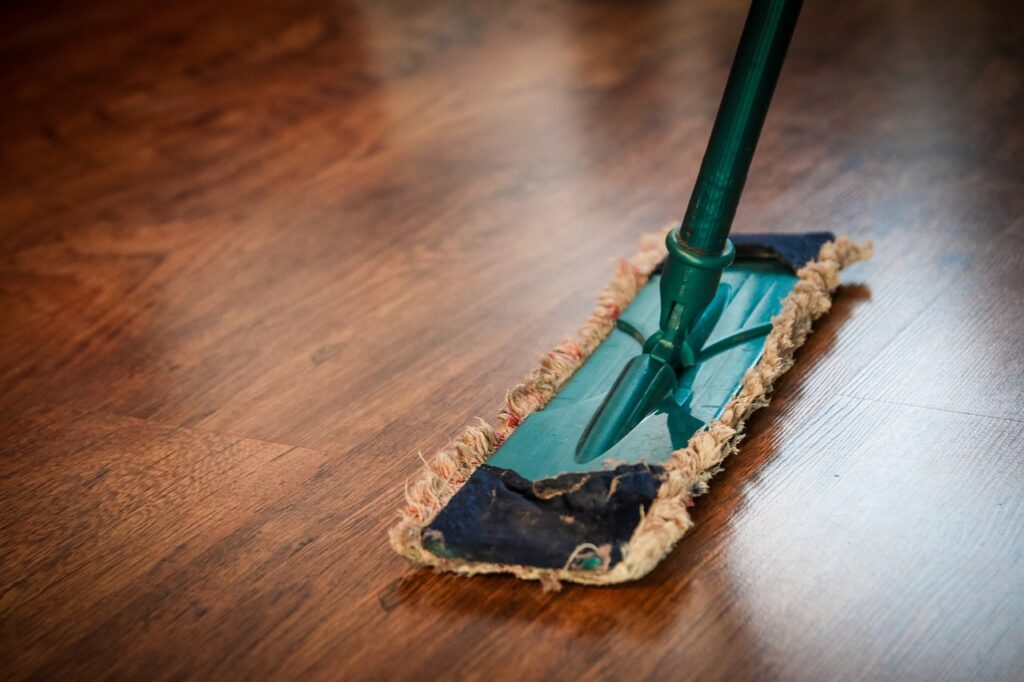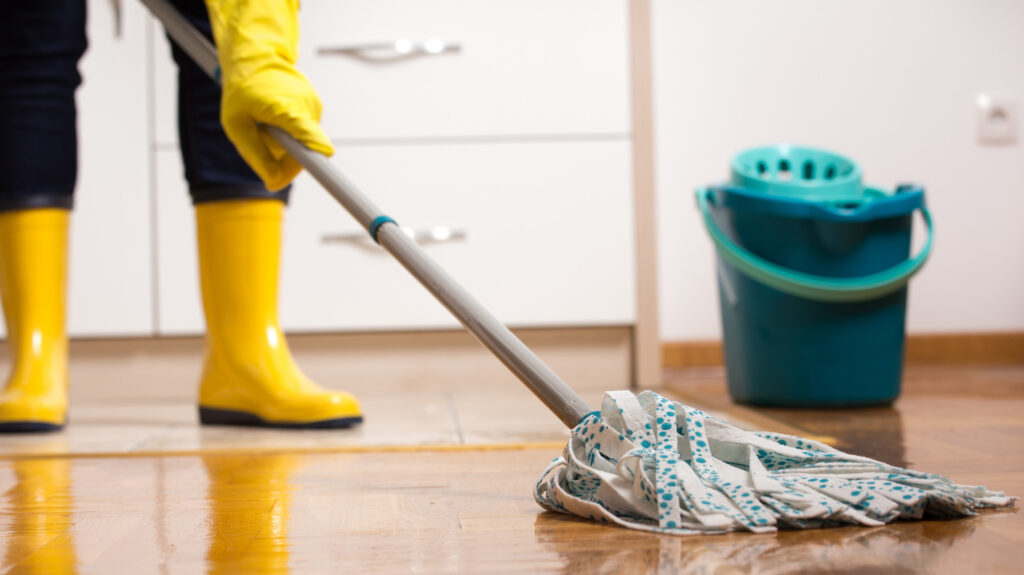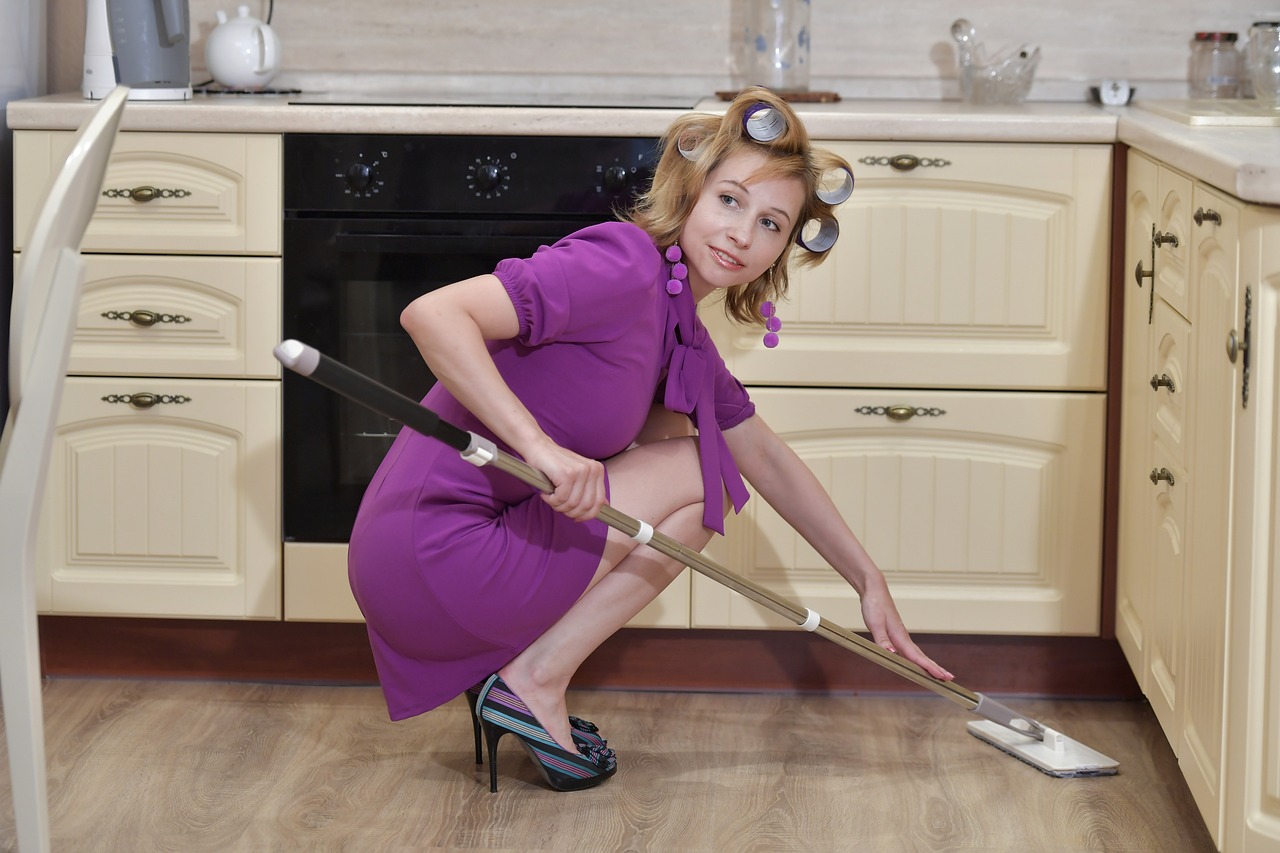Maintaining a clean and hygienic kitchen is essential for every homeowner. From meal preparation to social gatherings, the kitchen is undoubtedly the heart of the home. However, the kitchen floor, being subjected to daily foot traffic, spills, and food debris, often requires special attention when it comes to cleaning. In this article, we will explore the world of kitchen floor cleaning and delve into the various methods specific to different flooring materials. By understanding the cleaning methods tailored to your kitchen flooring, you can achieve spotless cleanliness without compromising the integrity of your floors.

Types of Kitchen Flooring Materials:
When choosing the right cleaning method for your kitchen floor, it is crucial to consider the type of flooring material you have. Here are some commonly found kitchen flooring materials and their traits:
Ceramic Tiles:
Highly durable and resistant to stains
Prone to grout accumulation
Requires regular sweeping and periodic mopping
Avoid using abrasive cleaners that may scratch the surface
Vinyl Floors:
Affordable and easy to maintain
Susceptible to scratches and discoloration
Sweeping and mopping with a mild detergent should suffice
Steer clear of abrasive brushes or harsh chemicals
Hardwood Flooring:
Offers timeless beauty and warmth to any kitchen
More vulnerable to water damage and scratches
Regular sweeping and periodic cleaning with a specialized hardwood floor cleaner
Avoid excessive moisture and vigorous scrubbing
Stone Tiles:
Exudes elegance and adds a natural touch to the kitchen
Susceptible to staining if not sealed properly
Sweeping, mopping with a gentle stone cleaner, and resealing if necessary
Avoid acidic or abrasive cleaners that can damage the sealant
Laminate Flooring:
Affordable alternative to hardwood flooring
Prone to scratches and moisture damage
Regular sweeping and mopping with a mild cleaner specifically designed for laminate floors
Refrain from using excessive water during cleaning
Understanding the characteristics of your flooring material is crucial in determining the most suitable cleaning method. By identifying your kitchen floor’s specific needs, you can effectively maintain its longevity and appearance.

Understanding Different Cleaning Methods:
Now that we have explored the various types of kitchen flooring, let us dive into the different cleaning methods that can be utilized to keep your floors pristine:
Sweeping and Vacuuming:
Regular sweeping or vacuuming removes loose dirt and debris from the floor’s surface.
Use a soft-bristle broom or a vacuum cleaner with a brush attachment to avoid scratching or damaging the flooring.
Don’t forget to reach the corners and under appliances where dirt often accumulates.
Mopping:
A damp mop can effectively remove stains and spills from most kitchen floors.
Use a mild, non-abrasive cleaner or a diluted mixture of water and vinegar for deeper cleaning.
Always wring out the mop well to prevent excessive moisture on the floor, which can cause damage to certain floorings.
Spot Cleaning:
For stubborn stains or spills, spot cleaning is recommended.
Identify the type of stain and choose an appropriate cleaning solution accordingly.
Use a soft cloth or sponge to gently scrub the stained area, making sure not to damage the flooring surface.
Professional Floor Cleaning:
Periodically, it might be beneficial to hire professional floor cleaning services.
Professionals have the expertise and equipment to deep clean and restore your kitchen floor to its optimal condition.
Consider scheduling professional cleaning annually or as needed, especially for high-maintenance flooring materials.
By understanding and implementing these different cleaning methods, you can keep your kitchen floor looking immaculate while ensuring the longevity of your flooring.
Customized Cleaning Approaches for Specific Flooring Types:
To ensure the best cleaning results for your kitchen floor, considering the specific needs of your flooring type is crucial. Here are some additional customized cleaning approaches for specific flooring types:
Ceramic Tiles:
Pay special attention to the grout lines between tiles, as they can accumulate dirt and be difficult to clean.
Consider using a grout cleaner or a homemade mixture of baking soda and water to tackle stubborn grout stains.
Regularly apply grout sealers to protect the grout from staining and discoloration.
Vinyl Floors:
Place doormats at entryways to prevent dirt and debris from being brought onto the vinyl floor.
Invest in furniture pads to prevent scratches caused by the movement of chairs and tables.
Apply a vinyl floor polish once in a while to restore its shine and protect the surface.
Hardwood Flooring:
Place rugs in high-traffic areas, such as in front of the sink or stove, to minimize wear and tear.
Wipe up spills immediately to prevent any moisture damage to the hardwood.
Consider using furniture pads to prevent scratches caused by the movement of heavy furniture.
By customizing your cleaning approach based on the specific requirements of your flooring type, you can ensure a thorough and effective cleaning routine that maintains the beauty and longevity of your kitchen floor.

Conclusion:
In conclusion, choosing the right cleaning method for your kitchen flooring is essential in maintaining a clean and inviting kitchen space. By understanding the characteristics of different flooring materials and utilizing appropriate cleaning techniques, you can achieve spotless cleanliness without compromising the integrity of your floors. So, roll up your sleeves, grab your cleaning supplies, and let your kitchen floor shine like never before!
